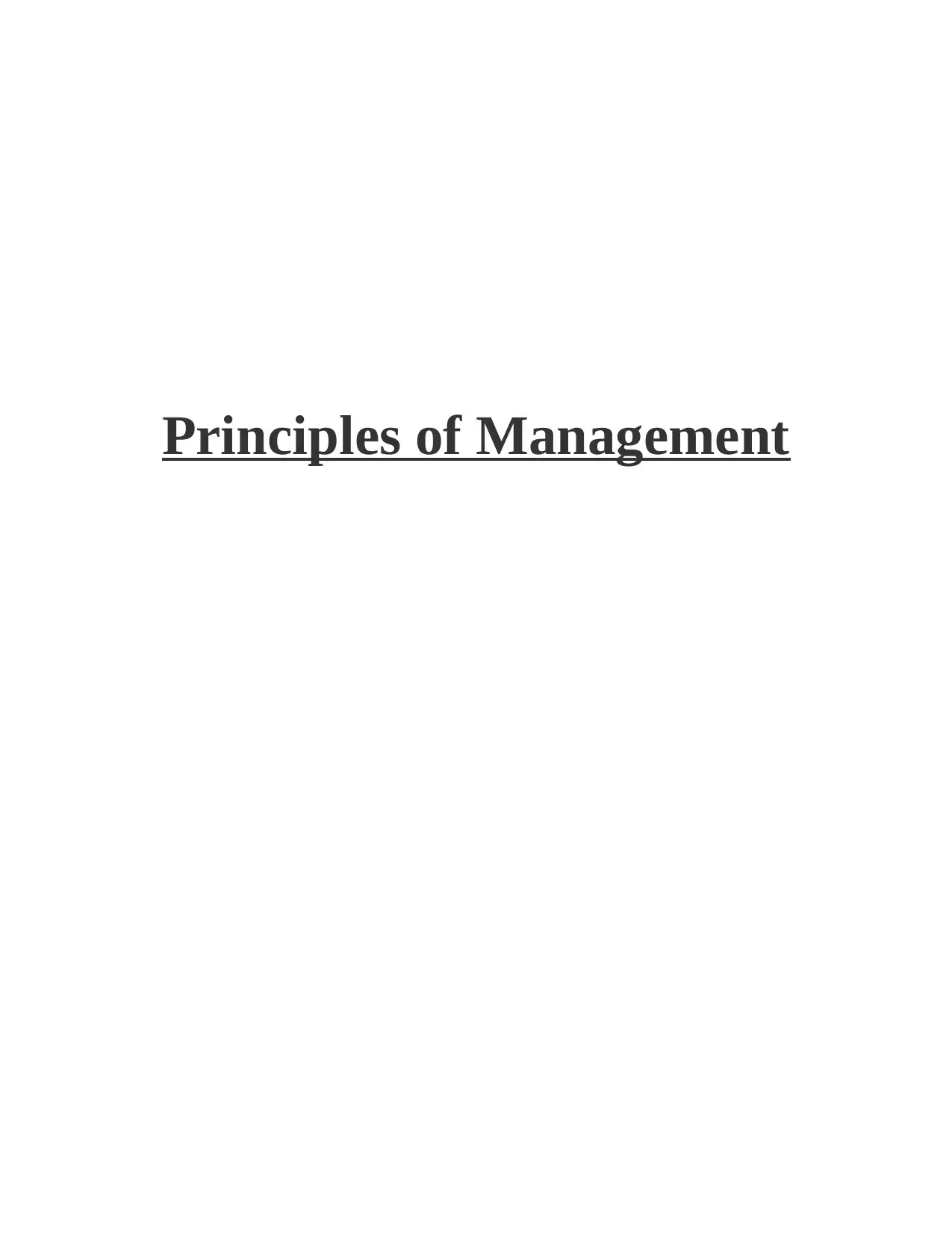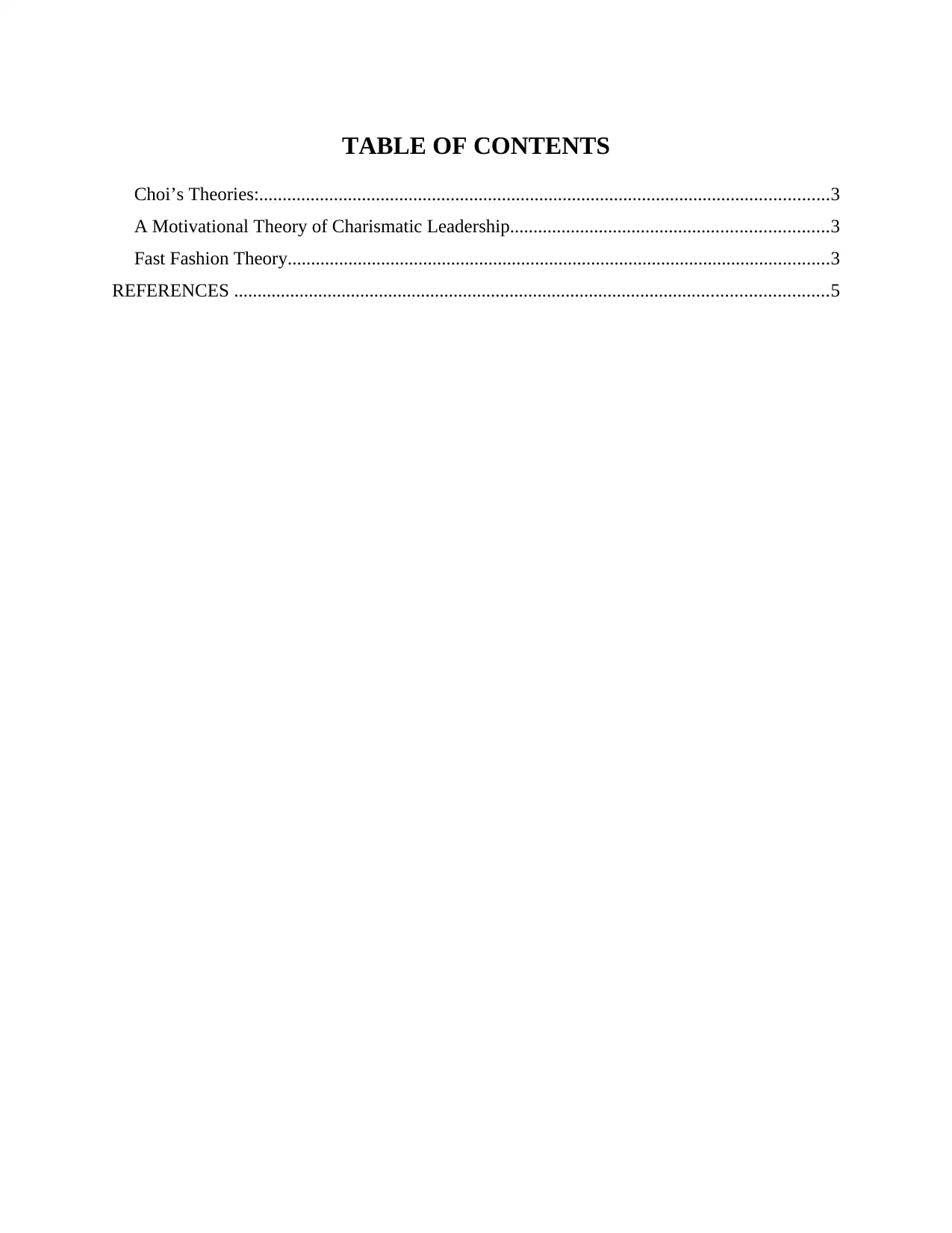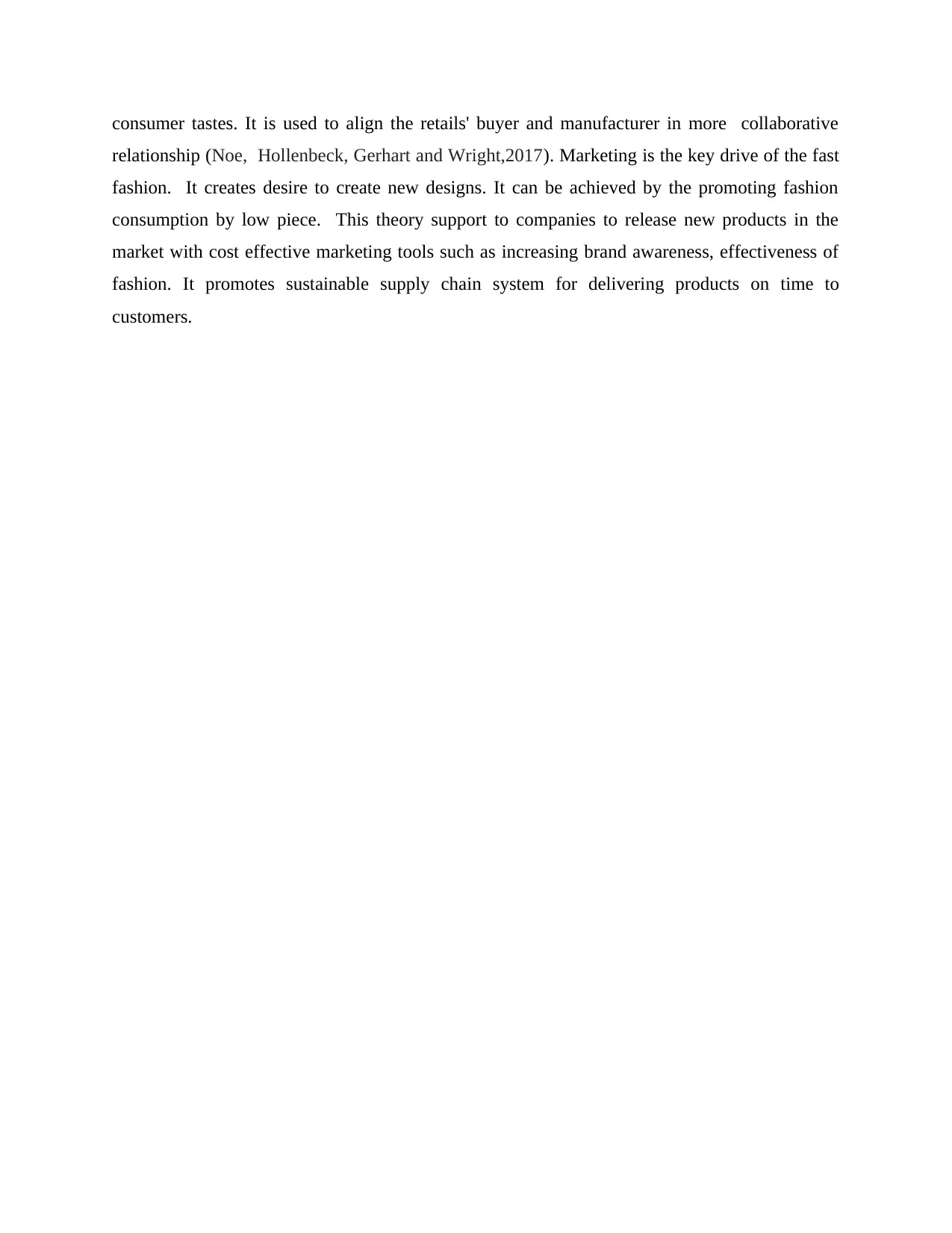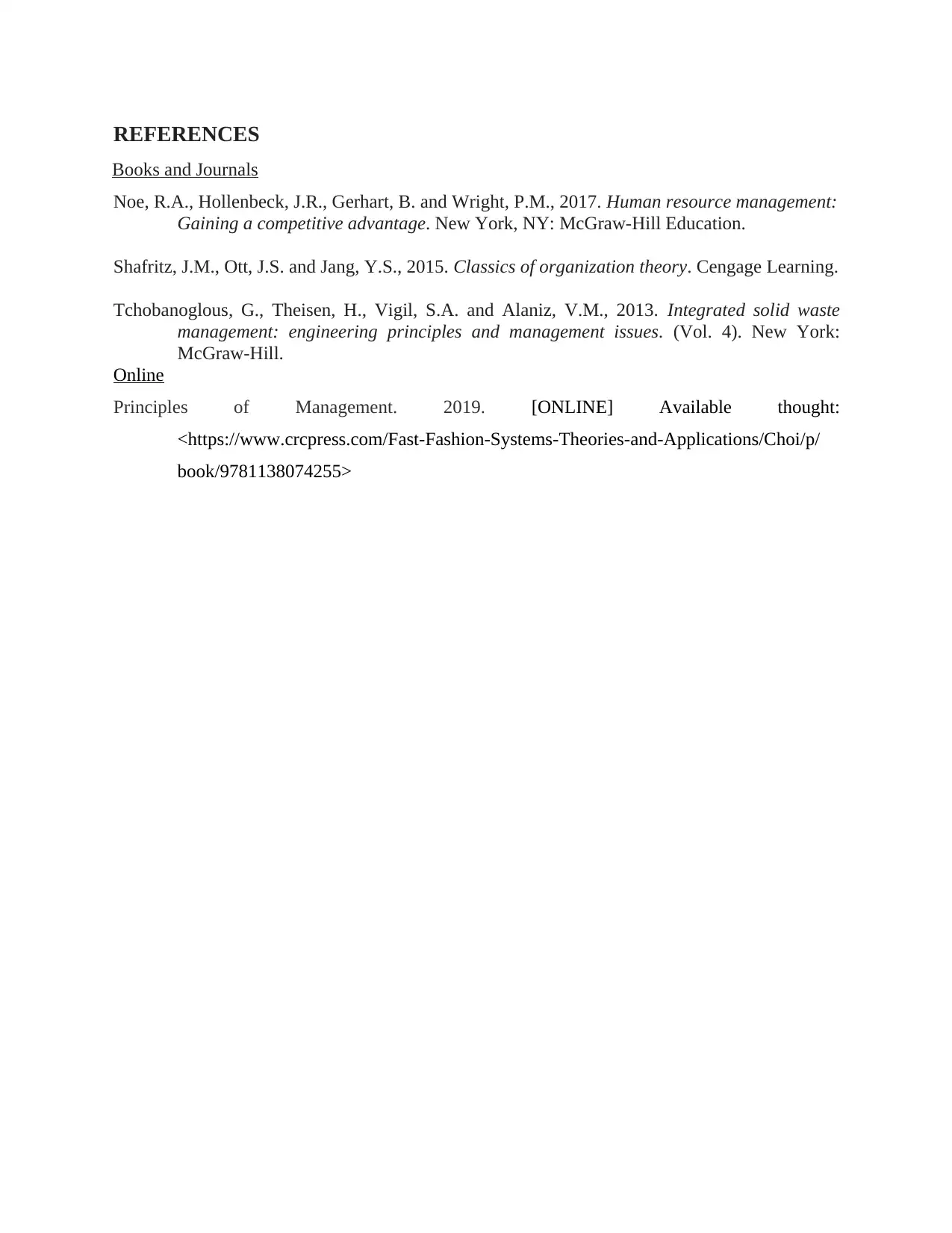Report on Choi's Theories: Leadership, Fast Fashion, and Management
VerifiedAdded on 2021/01/02
|5
|678
|468
Report
AI Summary
This report delves into Choi's Theories, focusing on motivational leadership and fast fashion. The analysis of motivational leadership explores its three major components: envisioning, empathy, and empowerment, and their impact on employee behavior, job satisfaction, and organizational cohesiveness. The fast fashion theory examines the concept of reducing time in distribution and production, and its implications for supply chain management, marketing, and cost management. The report references key sources, including books and journals, to support the discussion. It provides insights into how these theories influence management practices, organizational behavior, and the fashion industry, offering valuable perspectives for students and practitioners. Desklib offers this report and other study resources to aid students in their academic pursuits.
1 out of 5







![[object Object]](/_next/static/media/star-bottom.7253800d.svg)